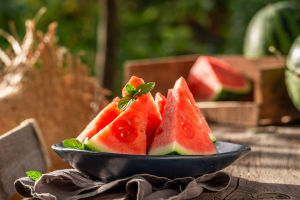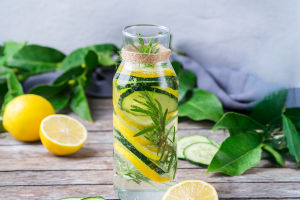Artificially Ripened Fruit
You know that satisfying moment when you bite into a perfectly ripe mango, banana, or avocado—and it's just right? But what if that fruit ripened a little too perfectly, too quickly, and suspiciously out of season?
Welcome to the world of artificially ripened fruit. It's more common than you think, and knowing how to spot it can help you make better, safer choices at the grocery store.
Why Artificial Ripening Happens
Before diving into detection, let's understand why fruits are ripened artificially in the first place.
Retailers and distributors often use artificial ripening agents to make unripe fruit look fresh and ready for sale faster. Natural ripening takes time and involves a complex chain of sugars, enzymes, and ethylene gas (a natural plant hormone). But to speed things up, some suppliers use chemicals like ethylene gas in controlled settings—or, in some controversial cases, calcium carbide, a substance banned in many countries due to health concerns.
While not all artificially ripened fruits are dangerous, they may lack in flavor, nutrition, or texture. Some may even pose health risks if improper chemicals are used.
Signs That a Fruit Was Artificially Ripened
So how do you tell the difference? Here are some easy, everyday signs to look for—no special equipment needed.
1. Uniform Color, Unnatural Shine
Naturally ripened fruits often have slight variations in color. A mango, for example, might have shades of green, yellow, and red all at once. If it's uniformly yellow with an unnatural gloss, that's a red flag. Artificially ripened fruits are often dipped or exposed to gases, giving them a synthetic surface finish.
2. Overly Soft But No Aroma
A ripe banana or peach should have a distinct fruity smell. If it feels soft but smells like... nothing? That's often a sign the ripening was forced. Artificial methods often speed up the softening of the fruit without allowing the aroma to develop naturally.
3. Ripe Outside, Raw Inside
Have you ever cut open a fruit that looked great outside but tasted bland or unripe inside? This happens frequently with artificially ripened produce. Natural ripening moves from the inside out, allowing sugars and flavors to develop evenly. Forced ripening, especially with chemicals, often affects only the outer layers.
4. Off-Season Ripeness
Some fruits have specific growing and harvesting seasons. If you see a large batch of perfectly ripe papayas or avocados out of season, they were likely picked green and ripened artificially. While cold storage is also used to extend shelf life, rapid ripening after long storage usually results in weak flavor and texture.
5. Slight Powder or Residue on Skin
In rare cases where illegal substances like calcium carbide are used (banned in the U.S. and EU), you might notice a powdery white or grey residue on the fruit's surface. Even if you wash the fruit, traces might remain in the peel. These should be avoided entirely.
Safe vs. Unsafe Ripening Techniques
It's important to distinguish between safe and unsafe methods. Ethylene gas, for example, is a natural plant hormone and is even produced by fruits themselves as they ripen. In controlled environments, ethylene exposure is a standard industry practice—generally safe and approved by food safety authorities.
Calcium carbide, however, reacts with water to produce acetylene gas, which mimics ethylene's effects but with harmful byproducts. Health authorities warn against its use due to potential toxic residues that can irritate the eyes, skin, and respiratory system.
If you want to avoid these completely, your best bet is to go for local, in-season produce or organic-certified fruits. Farmers' markets are a great source for these, and you can often ask directly about ripening practices.
What You Can Do As a Consumer
Being a smart shopper doesn't require lab tests—just a bit of awareness and a few practical habits.
1. Touch and Smell First
Use your senses: a real fruit smells like one. An overly perfect fruit that feels mushy but has no aroma is suspicious.
2. Buy In-Season and Local
Fruits in season are more likely to be naturally ripened. Local markets often carry fresher options than long-distance supermarkets.
3. Let It Ripen at Home
Buy slightly unripe fruits and let them ripen on your counter. You can even place them in a paper bag with a ripe banana to help the process naturally along using ethylene gas emitted by the banana.
4. Choose Organic if Possible
While not foolproof, organic certification usually prohibits chemical ripening agents. These fruits often have more irregularities in shape and color, but that's a good sign.
Still Not Sure? Cut It Open
When in doubt, cut open a sample fruit. If the inside is pale, hard, or flavorless despite a ripe-looking exterior, that's a strong clue. In contrast, naturally ripened fruit will be consistent in texture, color, and taste throughout.
Next time you're shopping, take a moment to pause and inspect your fruit. That slightly green mango or mildly fragrant banana might actually be the better choice in the long run. Have you ever bitten into a fruit that looked ripe but tasted like disappointment? Share your experience—and let's compare notes on what real ripeness tastes like.
Copyright © zogu 2021 - 2025. All Right Reserved.


